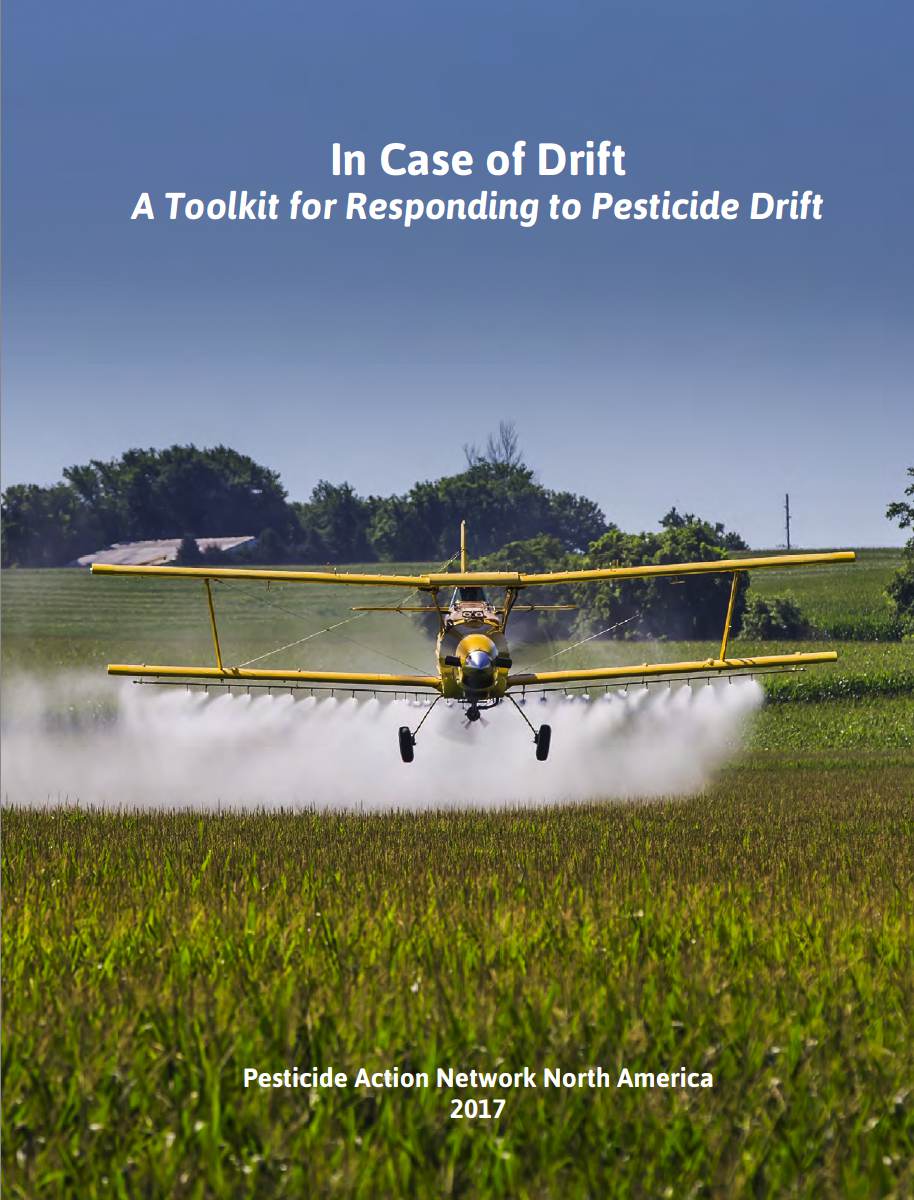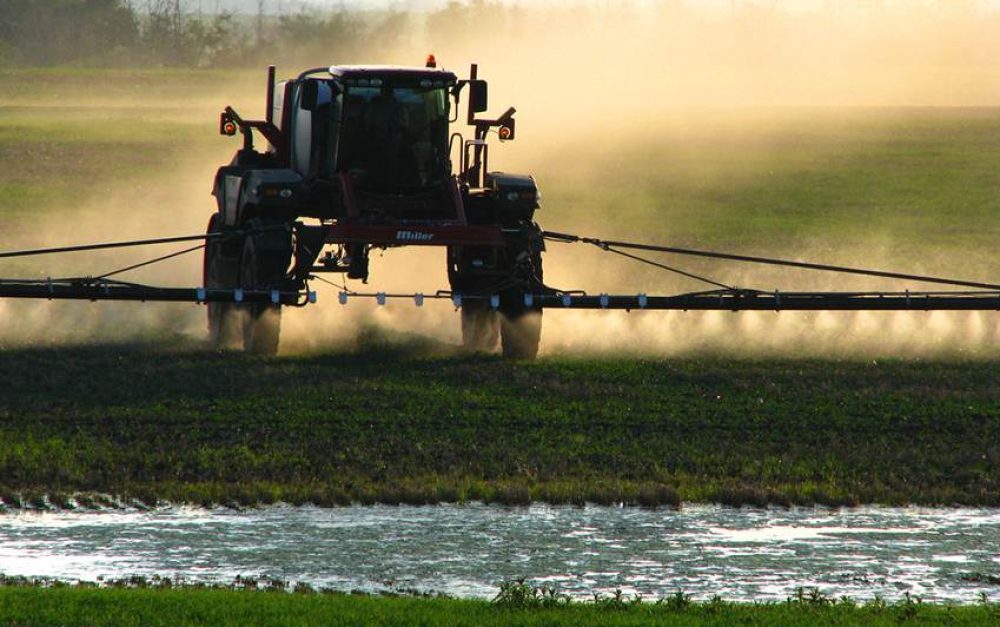Pesticide drift is a severely underreported problem in rural, agricultural communities. And now we’re in the middle of an epic summer of drift thanks to Monsanto’s new dicamba-resistant seed line, Xtend. Expanded planting of Xtend soy and cotton is leading to more spraying of the herbicide. As a result, farmers in Southern and Midwestern states are reporting extensive and debilitating crop damage from dicamba traveling from where it’s applied to nearby fields.
This is a crisis moment for many, but drift damage is not a new problem. For years, we at PAN have been been working with those impacted by drift — farmworkers, farmers and rural families who have experienced health harms or crop damage from drifting pesticides — and we’ve been pushing for preventative policies to protect these communities.
Now we have a new tool to offer in helping rural residents respond to drift incidents on farms, at work sites and in homes. This just-released guide, “In Case of Drift,” was created to help anyone facing drift from agricultural pesticides protect their health and livelihood. And we hope it will inspire you to speak up if drift is a problem in your community.
An invisible problem
Families facing pesticide drift generally receive very little support from government agencies at all levels. Technically, drift is illegal. But our federal government sets such permissive regulations on pesticides that drift is almost a guaranteed outcome. On top of that, local agencies only enforce these insufficient rules if a drift incident is reported, and even then label violation fines are rarely high enough to change an applicator’s behavior.
It’s no wonder that many farmers and rural families decide not to report drift. When government agencies fail to act, conversations on the ground can quickly turn into a dispute between neighbors or employers and employees. But because so many cases of drift go unreported, our government agencies can keep claiming that drift isn’t a problem for farm communities. That said, recent news headlines about dicamba drift damage are making it difficult for officials to continue ignoring the issue.
Dicamba disaster
A perfect storm of corporate greed and government failure has led to thousands of new cases of dicamba drift this season, with no quick solution in sight. It’s not polite to say “we told you so,” but it is important to note that PAN and a large coalition of farmer organizations predicted this crisis and presented compelling evidence against the introduction of the Xtend system — which the USDA and EPA ignored.
Dicamba is an old chemical, one known for volatility (likelihood to drift, no matter how it is applied). Yet Monsanto decided to make dicamba its solution for the superweed crisis caused by massive glyphosate use. Just keep using more, stronger chemicals once the current herbicides stop working, right? This is the “pesticide treadmill,” and it keeps the likes of Monsanto and Dow profitable even at the expense of farmer livelihoods and community health.
When it came to dicamba, Monsanto representatives swore up and down that their new formula would solve the drift problem, and USDA and EPA basically accepted the ag giant’s word in the rush to get Xtend crops to market.
Now some state governments are jumping in to temporarily ban dicamba, and some farmers are filing suits against Monsanto. PAN is working with our farmer allies to keep the pressure on USDA and EPA to pull Xtend products from the market.
But even without dicamba, drift will keep plaguing farms until we have serious policy and practice change around pesticides. In the meantime, PAN will keep helping rural families respond to individual incidents of drift.
How to respond
 Our new guide, “In Case of Drift,” was written to help anyone facing drift through the essential steps to responding: protecting health, observing, reporting, compensation and advocacy. PAN is offering this guide for free, and it can be downloaded here.
Our new guide, “In Case of Drift,” was written to help anyone facing drift through the essential steps to responding: protecting health, observing, reporting, compensation and advocacy. PAN is offering this guide for free, and it can be downloaded here.
In the advocacy section, we provide tools for using your drift story to ask for stronger pesticide regulations. Already have a story about drift? You can share it here.
Photo: Tamina Miller| Flickr








